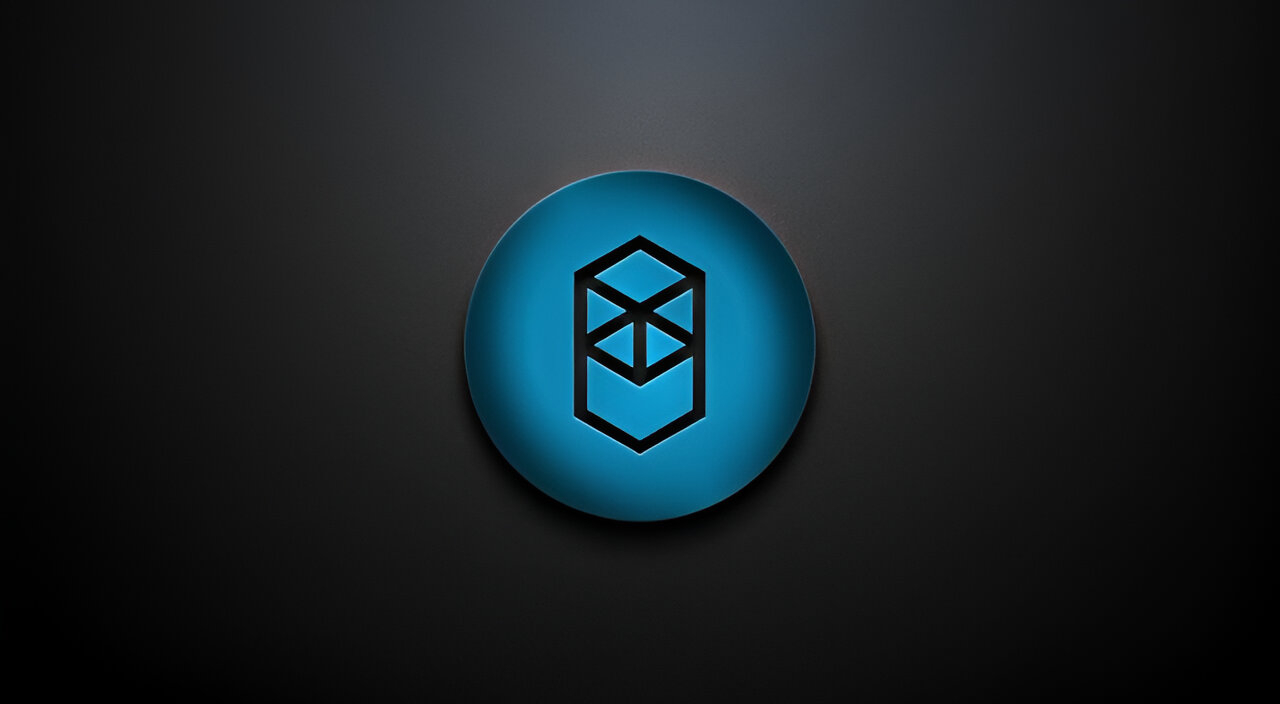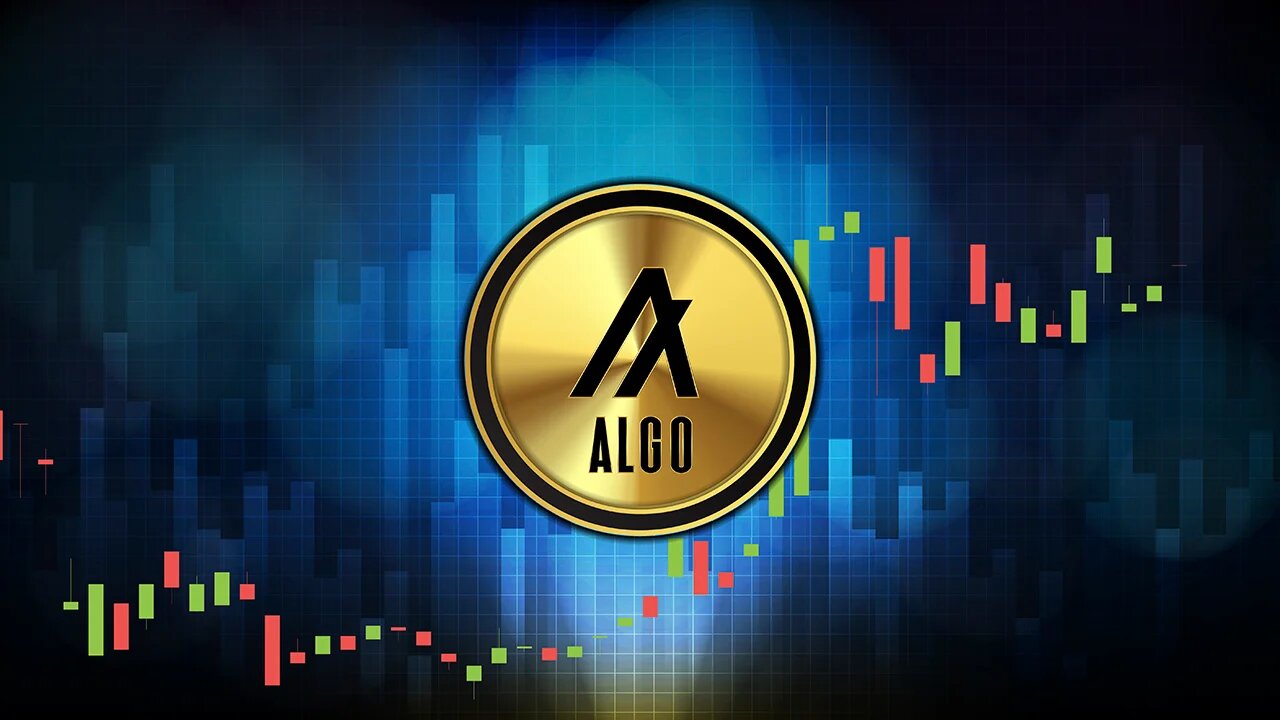Introduction
With the rise in popularity of cryptocurrency, various innovative technologies are being developed to address the scalability and efficiency issues associated with blockchain networks. One such technology gaining attention is Layer 2 cryptocurrency.
Layer 2 crypto refers to a secondary off-chain protocol that is built on top of a blockchain, allowing for faster and more cost-effective transactions. This layer essentially sits on top of the underlying blockchain, leveraging its security and decentralization while providing improved scalability and performance.
Layer 2 solutions aim to solve the scalability problem faced by many blockchain networks, such as Bitcoin and Ethereum, which can only handle a limited number of transactions per second. By moving transactions off the main chain and onto a secondary layer, these solutions alleviate network congestion and offer near-instant transaction confirmation times.
Layer 2 crypto works by taking advantage of mechanisms like state channels, sidechains, and payment channels to enable off-chain transactions. These mechanisms allow users to conduct multiple transactions without burdening the main blockchain with each individual action. Instead, only the final state of the transactions is recorded on the main chain, reducing the overall computational load and improving transaction throughput.
One of the key benefits of Layer 2 cryptocurrency is its ability to significantly increase transaction speed. By keeping most transactions off-chain, users can enjoy near-instantaneous payments and transfers. This makes Layer 2 crypto ideal for applications that require quick and frequent transactions, such as peer-to-peer micropayments, decentralized exchanges, and gaming platforms.
Furthermore, Layer 2 crypto offers lower transaction costs compared to conducting transactions directly on the main blockchain. By reducing the amount of data that needs to be processed on the main chain, Layer 2 solutions minimize transaction fees, making cryptocurrency more accessible to users and businesses alike.
Layer 2 solutions also enhance privacy and security. As most transactions occur off-chain, they are not publicly visible on the main blockchain, providing users with an added layer of confidentiality. Additionally, by reducing the number of on-chain transactions, Layer 2 crypto mitigates the risk of network attacks, making the overall system more secure.
Overall, Layer 2 cryptocurrency presents a promising solution to the scalability challenges faced by blockchain networks. By offering faster payments, lower costs, and improved privacy, Layer 2 crypto has the potential to revolutionize the way we interact with cryptocurrencies and blockchain-based applications.
What is a Layer 2 Crypto?
Layer 2 cryptocurrency refers to an additional protocol layer built on top of a blockchain network that aims to enhance its scalability and efficiency. This layer acts as an off-chain solution that handles transactions and computations, relieving the pressure on the main blockchain and enabling faster and more cost-effective transactions.
Layer 2 crypto utilizes various mechanisms and technologies to achieve its goals. One popular example is the implementation of state channels. State channels allow users to conduct numerous transactions off-chain, only recording the final state on the main blockchain. This significantly reduces the volume of transactions that need to be processed on the blockchain, improving efficiency and scalability.
Another approach is the use of payment channels, which enable direct transactions between two parties without having to broadcast each transaction to the blockchain. These channels establish a temporary off-chain connection between the transacting parties, allowing for near-instantaneous transfers and micropayments without incurring high transaction fees.
Sidechains are another form of Layer 2 solution that operates parallel to the main blockchain. Sidechains function as separate blockchains connected to the main chain, allowing for independent transactions. This can alleviate congestion on the main chain and enable faster and more scalable applications.
Layer 2 crypto can also utilize techniques like sharding, where the blockchain network is divided into smaller segments or shards that can process transactions in parallel. Sharding improves scalability by distributing the computational load across multiple nodes, resulting in increased transaction throughput.
The development and adoption of Layer 2 cryptocurrency offer numerous benefits. The primary advantage is enhanced scalability. By implementing these off-chain solutions, Layer 2 crypto significantly increases the number of transactions that can be processed per second, making blockchain networks more capable of handling mass adoption and high transaction volumes.
Layer 2 crypto also addresses the issue of high transaction fees commonly associated with on-chain transactions. By moving transactions off-chain, users can enjoy lower costs and faster confirmation times. This is particularly beneficial for applications that require frequent transactions or micropayments, as the cost per transaction is minimized.
Another advantage of Layer 2 crypto is improved privacy. As most transactions occur off-chain, they are not publicly visible on the main blockchain, providing users with an added layer of confidentiality. This is especially valuable for individuals and businesses that prioritize privacy in their financial transactions.
Overall, Layer 2 cryptocurrency brings significant improvements to scalability, transaction speed, cost-efficiency, and privacy. By introducing an additional protocol layer built on top of the blockchain, Layer 2 crypto aims to optimize the performance of blockchain networks, making them more versatile and accessible to a wider range of users.
How does Layer 2 Crypto work?
Layer 2 cryptocurrency works by implementing secondary protocols that operate on top of the underlying blockchain network. These protocols utilize various technologies and mechanisms to offload transactions and computations from the main chain, improving scalability and efficiency.
One common approach used in Layer 2 crypto is the implementation of state channels. State channels enable users to conduct multiple transactions off-chain, without the need to involve the main blockchain for every single action. The participants involved in a state channel establish a temporary agreement or contract, where they can freely exchange assets and update the state of their balances. This allows for fast and cost-effective transactions, as only the final state of the channel needs to be recorded on the blockchain.
Payment channels are another commonly used mechanism in Layer 2 crypto. Payment channels enable direct transfers between two parties by opening a channel between them. The channel acts as a temporary and private path for transferring assets, with the option to update the balance between the two participants. This reduces the need to broadcast every transaction to the blockchain, resulting in faster and cheaper transfers.
Sidechains are an alternative layer 2 solution that operates as separate blockchains connected to the main chain. Sidechains enable independent transactions and computations while still connecting to the main blockchain. By moving transactions to a sidechain, the main blockchain is relieved of congestion and can process transactions faster. Sidechains can provide enhanced scalability and allow for the development of specialized applications or use cases.
Sharding is another technique used in Layer 2 crypto to improve scalability. Sharding involves dividing the blockchain network into smaller shards or partitions, each capable of processing a subset of the overall transactions. Each shard operates independently, processing transactions within its segment and communicating with the other shards when necessary. By distributing the workload across multiple shards, sharding can significantly increase the transaction throughput of the blockchain network.
Layer 2 crypto solutions may also utilize a combination of these mechanisms, depending on the specific use case and desired outcomes. The primary goal is to move transactions off the main chain, reducing congestion and improving transaction speed and efficiency.
It is important to note that although Layer 2 solutions offer enhanced scalability and performance, they are still reliant on the main blockchain’s security and decentralization. The final state of the off-chain transactions is ultimately recorded on the main chain, ensuring the integrity and immutability of the overall system. This combination of off-chain processing and on-chain settlement provides a balance between efficiency and security in Layer 2 cryptocurrency.
Benefits of Layer 2 Cryptocurrency
Layer 2 cryptocurrency offers a range of benefits that address the scalability and efficiency challenges faced by blockchain networks. These benefits make Layer 2 solutions attractive for both users and developers, opening up new possibilities and use cases for cryptocurrencies.
One of the key benefits of Layer 2 crypto is improved scalability. By moving transactions off the main blockchain, Layer 2 solutions can significantly increase the number of transactions that can be processed per second. This scalability improvement is crucial for accommodating a growing user base and enabling mainstream adoption of cryptocurrencies.
Layer 2 crypto also enhances transaction speed. With most transactions occurring off-chain and recorded on the main blockchain only when necessary, Layer 2 solutions enable near-instantaneous transactions, providing a seamless user experience. This is particularly important for applications that require fast and frequent transactions, such as decentralized exchanges or online gaming platforms.
Transaction costs are significantly reduced with Layer 2 crypto. By reducing the computational load on the main blockchain, Layer 2 solutions minimize transaction fees, making cryptocurrency more accessible to a wider range of users. This cost reduction is especially advantageous for micro-transactions and use cases where low-cost transactions are essential.
Privacy is also enhanced through Layer 2 cryptocurrency. As most transactions occur off-chain, they are not publicly visible on the main blockchain, providing users with an added layer of confidentiality. This privacy feature is particularly appealing for individuals and businesses that prioritize the security and anonymity of their financial transactions.
Layer 2 crypto also increases the efficiency of smart contract execution. By offloading computations to the secondary layer, smart contracts can be executed faster, improving overall application performance. This efficiency improvement expands the possibilities for developing complex decentralized applications that require complex computations without sacrificing performance.
Furthermore, Layer 2 solutions promote interoperability between different blockchain networks. As these solutions operate on top of the underlying blockchain, they can be implemented across various blockchain ecosystems, facilitating seamless communication and exchange of assets between different networks.
Lastly, Layer 2 crypto can foster innovation and experimentation in blockchain technology. By offering scalability and performance improvements, these solutions open up new avenues for developers to create and deploy decentralized applications, enabling the exploration of novel use cases and driving the evolution of the blockchain ecosystem.
In summary, Layer 2 cryptocurrency provides significant benefits, including improved scalability, faster transaction speed, reduced costs, enhanced privacy, efficient smart contract execution, interoperability, and fostering innovation. These benefits make Layer 2 solutions an essential component in addressing the limitations of blockchain networks and unlocking the full potential of cryptocurrencies.
Examples of Layer 2 Cryptocurrencies
Layer 2 cryptocurrency solutions have gained significant traction and adoption in the blockchain space. Several projects have successfully implemented Layer 2 technologies to enhance scalability and improve the overall performance of their respective blockchain networks. Here are a few notable examples:
Bitcoin’s Lightning Network: The Lightning Network is a Layer 2 solution designed to address Bitcoin’s scalability challenges. It enables fast and low-cost transactions by creating off-chain payment channels between two parties. These channels allow for instant transfers without needing to record every transaction on the Bitcoin blockchain. The Lightning Network significantly enhances Bitcoin’s scalability and enables micropayments and frequent transactions that were previously impractical on the main chain.
Ethereum’s Plasma: Plasma is a Layer 2 construction built on top of the Ethereum blockchain. It allows for the creation of child chains, known as plasma chains, that can process transactions independently. These plasma chains only submit the necessary details to the main Ethereum blockchain, reducing computational load and increasing scalability. Plasma is designed to handle complex smart contract executions and offers increased transaction throughput for decentralized applications built on the Ethereum network.
OmiseGO: OmiseGO is a Layer 2 solution that aims to provide scalable and secure financial infrastructure. Built on the Ethereum network, OmiseGO enables the transfer and exchange of digital assets in a decentralized manner. It utilizes a technology called More Viable Plasma (MoreVP) to achieve high transaction throughput. By leveraging a network of plasma chains, OmiseGO aims to facilitate fast and low-cost transactions, making it suitable for various financial applications like remittances, payments, and decentralized exchanges.
Near Protocol: Near Protocol is a Layer 2 solution that aims to offer high scalability and low-latency smart contract execution. It utilizes a mechanism called sharding, where the blockchain network is divided into smaller shards. These shards can process transactions and execute smart contracts independently, significantly improving the overall scalability of the network. Near Protocol enables developers to build decentralized applications efficiently and provides an environment conducive to mass adoption and user-friendly experiences.
ZkSync: ZkSync is a Layer 2 scaling solution for Ethereum that utilizes zero-knowledge proofs to provide high transaction throughput and low fees. It enables users to conduct fast and secure transfers and allows for the efficient execution of smart contracts. By aggregating multiple transactions into a single proof, ZkSync reduces the computational load on the Ethereum network and improves transaction confirmation times. ZkSync makes Ethereum more scalable and accessible to a broader range of applications and users.
These are just a few examples of Layer 2 cryptocurrency projects that aim to address scalability challenges and enhance blockchain networks’ performance. Each of these solutions offers unique features and mechanisms to improve transaction speed, reduce costs, and increase scalability, paving the way for the mass adoption of decentralized applications and cryptocurrencies.
Challenges and Limitations of Layer 2 Cryptocurrency
While Layer 2 cryptocurrency solutions offer significant benefits, they also face several challenges and limitations that must be considered. It is important to understand these factors to ensure a realistic assessment of their capabilities and potential drawbacks.
Complexity: Implementing Layer 2 solutions can be technically complex and require a deep understanding of both the underlying blockchain network and the specific Layer 2 technology being utilized. Developers need to design and deploy these solutions with utmost care to ensure security, compatibility, and seamless integration with the main chain. This complexity may limit the speed of adoption and the availability of robust infrastructure and tools for developers.
Centralization and Trust: Some Layer 2 solutions require the trust of a central entity or operator. For example, payment channels in Layer 2 networks often require a trusted intermediary to operate and manage the channel. This introduces a level of centralization and reliance on trust, which goes against the core principles of decentralization that blockchain technology aims to achieve. Efforts are being made to develop decentralized Layer 2 solutions that minimize reliance on trusted third parties.
Interoperability: Layer 2 solutions can create interoperability challenges between different blockchain networks. Each Layer 2 technology may be specific to a particular blockchain or require significant modifications to work with other networks. Achieving seamless communication and cross-chain compatibility can be a complex endeavor that requires standardization and collaboration between different blockchain projects.
Security: Layer 2 solutions introduce additional attack vectors and security risks. While the underlying blockchain provides security through decentralization and consensus mechanisms, Layer 2 solutions may face vulnerabilities specific to their design and implementation. Issues such as smart contract bugs or vulnerabilities in the Layer 2 protocol can potentially be exploited, leading to loss of funds or other security breaches. Thorough testing, auditing, and strict security practices are crucial to mitigate these risks.
User Experience: Layer 2 solutions should aim to provide a seamless and user-friendly experience. However, the user experience can be compromised due to the intricacies involved in interacting with Layer 2 technologies. Users may need to manage multiple wallets or navigate complex processes to engage with Layer 2 applications. Simplifying the user experience and abstracting the complexities of Layer 2 solutions will be essential for driving widespread adoption.
Adoption and Liquidity: Layer 2 solutions rely heavily on user adoption and liquidity to reach their full potential. For solutions like payment channels to be effective, there must be a critical mass of users and liquidity providers willing to participate. Building and maintaining this ecosystem can be a challenge, especially in the early stages of adoption. Without sufficient adoption and liquidity, Layer 2 solutions may not deliver the expected scalability and cost-efficiency improvements.
Despite these challenges and limitations, ongoing research, development, and collaboration within the blockchain community are working towards overcoming these hurdles and enhancing the capabilities of Layer 2 cryptocurrency solutions. As the technology advances, these limitations are being addressed, paving the way for a more scalable and efficient blockchain ecosystem.
Conclusion
The development of Layer 2 cryptocurrency solutions has brought significant advancements to the blockchain industry, addressing the scalability and efficiency challenges faced by traditional blockchain networks. Layer 2 crypto offers enhanced scalability, faster transaction speed, reduced costs, improved privacy, efficient smart contract execution, increased interoperability, and promotes innovation.
By implementing secondary off-chain protocols, such as state channels, payment channels, sidechains, and sharding, Layer 2 solutions enable faster and more cost-effective transactions by offloading computations from the main blockchain. This improves scalability, transaction throughput, and user experience.
However, Layer 2 solutions are not without challenges and limitations. Complex implementation, potential centralization, interoperability issues, security risks, user experience concerns, and the need for widespread adoption and liquidity are among the factors that must be addressed to realize the full potential of Layer 2 cryptocurrency.
Despite these challenges, the ongoing development and research in the blockchain community show promising signs of progress. The collaboration between projects, standardization efforts, and the continuous improvement of Layer 2 technologies will contribute to overcoming these hurdles and unlocking the full potential of Layer 2 cryptocurrency solutions.
As the blockchain ecosystem evolves, it is essential to recognize the value that Layer 2 crypto brings to the table. Layer 2 solutions offer scalability, efficiency, and enhanced functionalities that can empower real-world use cases, drive mass adoption, and revolutionize the way we interact with cryptocurrencies and decentralized applications.
With further advancements in Layer 2 technology, we can expect to see even more innovative solutions that address the limitations of blockchain networks, paving the way for a more scalable, efficient, and accessible decentralized future.

























